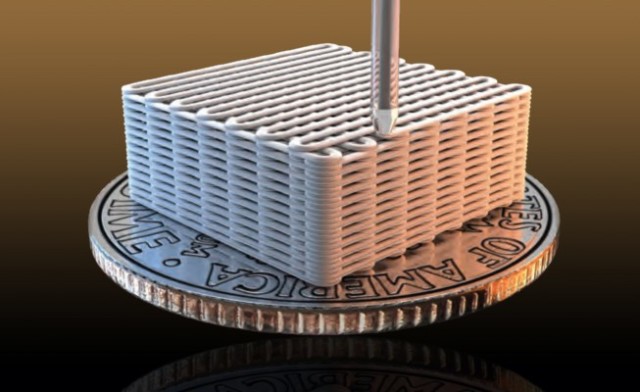Using a 3D printing technique called direct ink writing, Lawrence Livermore National Laboratory researchers created graphene aerogel micro lattices with an engineered architecture.
You can read the about the research in the April 22 edition of Nature Communications.
What differentiates 3D printed graphene aerogels from bulk graphene materials?
They high surface area, excellent electrical conductivity, are lightweight, have mechanical stiffness and exhibit super compressibility (up to 90 percent compressive strain). Also, 3D printed graphene aerogel micro lattices have much better mass transport than bulk graphene materials.
What exactly is Aerogel material?
Aerogel is a “synthetic porous, ultralight material derived from a gel, in which the liquid component of the gel has been replaced with a gas,” also referred to as “liquid smoke.”
Earlier attempts to create bulk graphene aerogels resulted in a largely random pore structure. This removed the ability to tailor transport and other mechanical properties of the material for specific applications including separations, flow batteries and pressure sensors.
“Making graphene aerogels with tailored macro-architectures for specific applications with a controllable and scalable assembly method remains a significant challenge that we were able to tackle,” according to engineer Marcus Worsley, a co-author of the paper. “3D printing allows one to intelligently design the pore structure of the aerogel, permitting control over mass transport (aerogels typically require high pressure gradients to drive mass transport through them due to small, tortuous pore structure) and optimization of physical properties, such as stiffness. This development should open up the design space for using aerogels in novel and creative applications.”
Read more at ENGINEERING.com


